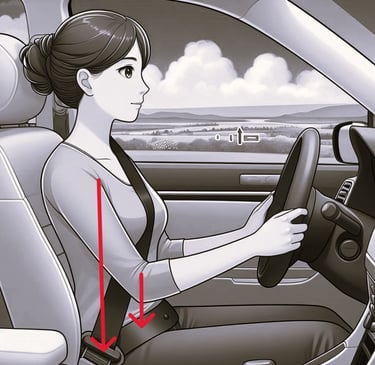Sitting with straight spine
Supports Spinal Alignment
Keeping the pelvis straight and elevated helps maintain the natural curves of the spine, particularly the lumbar curve. This can reduce strain on the back muscles and spine, helping to prevent pain and discomfort.
When sitting, the sit-bones make contact with the surface, providing a stable base of support. The pelvis acts as a bridge between the spine and the legs, distributing the weight of the upper body onto the sit-bones.




The spine should be upright with the pelvis as the foundation
The spine protects the central nervous system and supports muscles and body weight, ensuring proper function, motion, and shock absorption. The sit bones bear the loading force from the upper body, controlled by the spine. In correct posture, the upper body rotates around the spine, and arms hang naturally from the shoulders. Activating thigh and gluteal muscles ensures stability and endurance. However, it is advisable to take breaks and engage in full-body movements to enhance blood circulation and overall health.


Sitting position of driving
Adjust the back chair to almost vertical with seat;
Butt fills in the corner of the seat; sitting straight: spine is almost vertical with the legs and body weight on the pelvis through the straight spine;
As sitting in a car seat, you should be resting your body against the seat to provide your muscles and joints with lots of support. Ensure you slide your tailbone to the back of the seat as much as possible. Rest your head back up against the headrest in a chin tuck motion.


